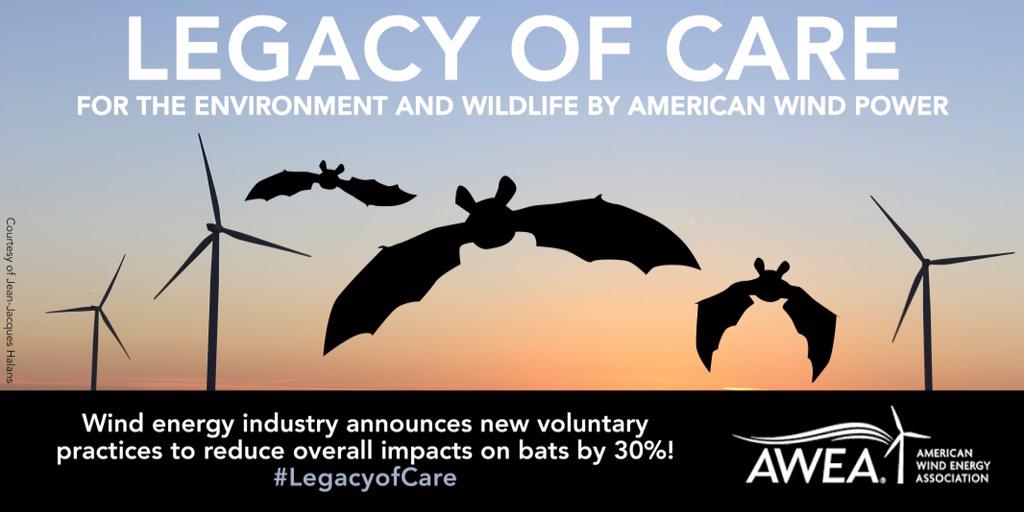Anderson: Hey Austin, love bats? So does wind power
Austin has a rich heritage of celebrating bats, and the city has been called one of the best places in the world to watch them. Friday is National Wildlife Day, so there’s no better time to talk about the importance of protecting and preserving our flying friends.
Austin, with the rest of Texas, is pretty familiar with wind energy and many of the economic and environmental benefits it brings. The state ranks first in the country in both electricity generated from wind, and, with 18,000 employees, in jobs supported by wind power.
The Lone Star State may be less familiar, however, with American wind power’s legacy of care when it comes to wildlife and the environment. Wind is the cleanest source of utility-scale electricity, and the wind industry does more to study, avoid, minimize and mitigate any wildlife impacts than any other industry.
There’s no better example of this environmental stewardship than the industry’s announcement this week of a new best management practice for operating turbines, which is expected to reduce wind energy’s impact on bats by up to 30 percent.
Over the past decade, the U.S. wind industry has worked with bat biologists and others in the conservation and academic communities to identify and test a variety of methods to protect bats during their critical fall migration season, when evidence shows they are most at risk.
As a result of that collaboration with bat conservationists, the industry has decided to take a meaningful step toward voluntarily reducing impacts to bats by limiting turbine operations to less than 1-3 revolutions per minute, depending on blade length, throughout the fall migration.
This decision by U.S. wind farm owners is not without consequence. Understanding that climate change poses the biggest threats to bats and all wildlife, the electrons lost from wind energy may be replaced by others from far more impactful fossil fuel generation, and in turn the benefits to bats from wind energy generation are diminished.
And, the industry stands to lose out on millions of dollars’ worth of wind-generated electricity as a result. Meaning, this is one industry that’s willing to take in less money to keep more bats alive.
This agreement is the best “bang for the buck,” as it strikes a balance between protecting and preserving bats when they are most at risk, while allowing wind energy to continue producing reliable, zero-emissions electricity the rest of the year.
While by far the greatest risks to bats are white nose syndrome — a fatal disease that has led to millions of bats dying since its emergence in 2006 — and climate change-driven habitat loss and related impacts, the wind industry has recognized the need do its collective part in directly aiding their conservation.
It is our sincere hope this announcement will encourage other energy industries, and all businesses for that matter, to take steps to reduce their impacts on the environment in their respective communities.
Regardless, pollution-free, renewable wind energy will keep building on its legacy of care.
Americans must choose how to generate the electricity to power our modern society — and do so in the least impactful way. With the adoption of this protocol, the wind industry is once again showing it is indeed the right choice.
Anderson is senior director of permitting policy and environmental affairs at the American Wind Energy Association.
Want to share the good news? Click below to retweet the following on Twitter!
American wind power: new practices to reduce bat impacts by up to 30% #LegacyofCare http://bit.ly/1KKPEwC
The following op-ed appears in the Friday, September 4 edition of the Austin American-Statesman.




